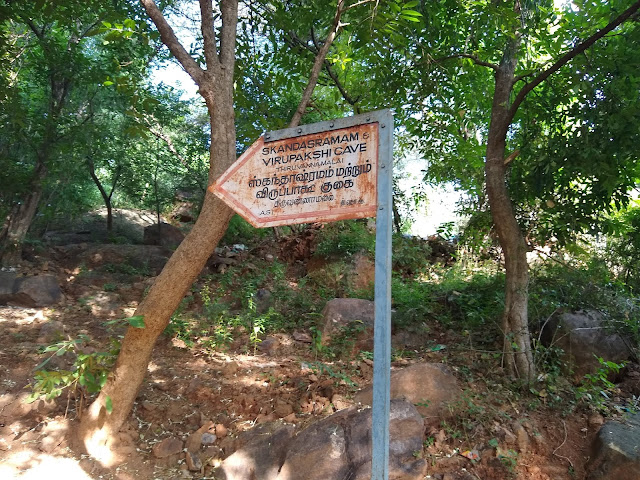March 15, 2020
 |
| Niece accidentally painted Coronavirus! |
The world is going through a tough time. How did we end up here?
Even though we are all socially distant (or more socially connected virtually?), no one is quite alone in it. It feels like we have been given the time to slow down, to sit at home longer so this could very well be a reflecting moment. Could we see this as a time to meditate on what we could do differently?
If you are connected to the world through any of the social media - Facebook, WhatsApp, etc., you have probably heard about or seen empty shelves in stores, people in line with carts waiting outside of big departmental stores, the inability to find hand soap, sanitizers, and other such essentials, etc at least in the America.
A well-wisher and friend called up to remind me to buy some essentials to keep myself equipped in case of need. Toilet paper, groceries were among the few that I was told to buy. I had been hearing about stockpiling and the shortage of essentials from my co-workers. It did make me think about what I needed to do.
I had a ‘wait a minute moment’ while I was thinking about what and if I need to get anything. I made a list of all the things I eat on any normal day and the list could fit in the top half of a small sticky note. Then came the question of do I need toilet paper? Almost 6 years ago, I installed bidet in the toilet to get back to my Indian standards. Since then the toilet papers are there for my guests and at this time, my guests are probably busy buying their own toilet papers.
Looking at my $10 bill at the Indian store during the last visit, the guy behind the billing counter mentioned that people are hoarding groceries worth $600. There was a sadness and a sense of worry on his face. I heard that the stores are now doing rationing. I bought some potatoes and taro root, both of which can last long. Coincidently later my mother mentioned how their neighbors asked them to buy some potatoes and kerosene oil after a flood warning long back - Potatoes to eat and Kerosene oil to light the stove.
So where is the need to stockpile coming from? It could very well be pointed to the self-preservation instinct or fear of death in a negative form. Self-preservation makes one buy the things one might need for a few weeks if one needs to quarantine themselves, but going overboard with it becomes hoarding, a natural outcome of ignorance.
I could relate it to what Patanjali says as the five Kleshas (क्लेशा:), afflictions or causes of suffering for human beings.
अभिनिवेश (clinging to life) is the last one and deeply rooted in every human being.अविद्यास्मितारागद्वेषाभिनिवेशाः क्लेशाः॥2.3॥Ignorance, egoism, attachment, hatred (aversion), and clinging to life are the five kleshas or state of a suffering mind.
The hoarding can be described in two ways, one gross and the other subtle: Parigrah (परिग्रह - possessing or grasping unnecessary) and Steya (स्तेय - stealing). Accumulating goods simply is possessing more than one needs. When one hoard, they are not just possessing it but also subtly stealing something from others who could very well make use of it. By possessing more, one contributes to raising the prices and even making things unavailable for others to use.
The opposite of Parigrah and Steya are Aparigrah (अपरिग्रह - non-possessiveness) and Asteya (अस्तेय - non-stealing) respectively - two of the five Yamas of Ashtanga Yoga. Yamas are the first of the eight angas (limbs) in Patanjali’s Ashtanga Yoga and described as self-regulating behavior in our interactions with the world. Patanjali gives assurance that if Asteya is followed, all ‘wealth’ will be available.
While it may appear like a difficult task to follow Asteya, one doesn’t need to go to a yoga class to practice it!
The opposite of Parigrah and Steya are Aparigrah (अपरिग्रह - non-possessiveness) and Asteya (अस्तेय - non-stealing) respectively - two of the five Yamas of Ashtanga Yoga. Yamas are the first of the eight angas (limbs) in Patanjali’s Ashtanga Yoga and described as self-regulating behavior in our interactions with the world. Patanjali gives assurance that if Asteya is followed, all ‘wealth’ will be available.
On a positive note, I see people coming forward to help and share in my neighborhood. Young folks have created virtual groups to help the elderly by bringing groceries to their door so they can avoid the fear of catching anything.अस्तेयप्रतिष्ठायां सर्वरत्नोपस्थानम् ॥2.37 ||To the one who is established in non-stealing, all wealth comes.
While it may appear like a difficult task to follow Asteya, one doesn’t need to go to a yoga class to practice it!
















































